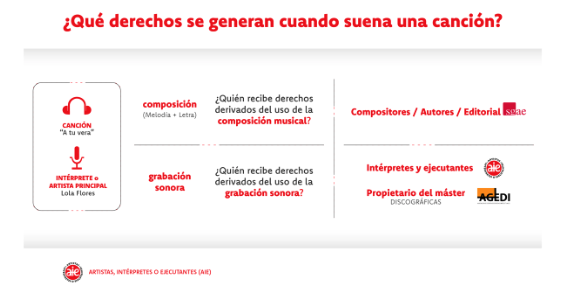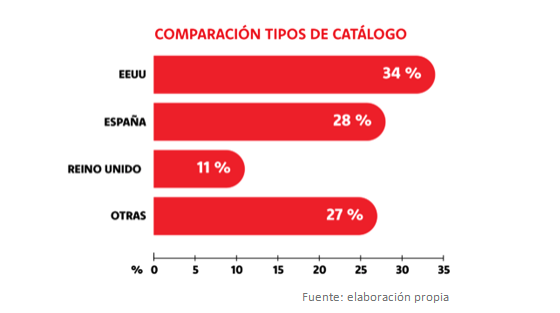Why is the sale of music catalogs uncommon in Spain?
You have probably come across the word “catalog” in articles related to the music industry before. In recent years, the media has been filled with news about the sale of major artists’ catalogs or the success of catalog music on digital platforms. They may sound…
You have probably come across the word “catalog” in articles related to the music industry before. In recent years, the media has been filled with news about the sale of major artists’ catalogs or the success of catalog music on digital platforms. They may sound like the same thing, but are they really?
No, these two terms, while closely related, refer to very different realities. When we talk about a catalog, we are referring to an artist’s repertoire, which varies in size depending on their career length and the number of songs they have released. On the other hand, catalog music refers to music that is at least 18 months old from its original release date, according to the definition set by the Recording Industry Association of America (RIAA), which is widely accepted across the music industry.
When discussing artists who have sold their catalogs to publishers, investment firms, or record labels, names like Shakira, Bob Dylan, Justin Bieber, and Bruce Springsteen come to mind. These artists, in exchange for large sums of money (Springsteen reportedly sold his catalog for $500 million), transfer the rights to their songs to a third party, which can then exploit them as they see fit. This practice has recently become a lucrative business, generating revenue through digital platforms, social media, and song synchronization in TV, film, and advertising. This one-time payment, known as a buyout, provides immediate income but results in a complete loss of creative control.
At this point, it’s important to clarify that catalog sales involve two key rights: copyrights (composition and lyrics) and recording rights (the original recordings or master recordings). While some artists own both, that is not always the case.

Copyrights are usually shared between composers (music) and authors (lyrics) along with publishers, who manage and exploit these rights on behalf of the authors and composers.
Recording rights are assigned by artists to record labels in exchange for royalties or compensation for the authorized use of their music.
Therefore, selling a catalog is a broad term, and the specifics depend on an artist’s negotiation power and the agreements in place. For example, Taylor Swift was able to re-record her songs because she had only sold her recording rights, while retaining her songwriting copyrights. This allowed her to recreate her music without infringing on the sold rights. However, in most catalog sales, copyrights are also included in the deal.
Is this possible in Spain?
If this practice is so common in the industry, why don’t we see more artists selling their catalogs in Spain? In Spain, selling music catalogs to investment funds is far more complicated than in countries like the United States, primarily due to intellectual property laws that do not allow the complete sale of exploitation rights—only their transfer. There are two key legal principles that prevent the full sale of copyrights
According to Elena Barroso, a lawyer for AIE (Sociedad de Artistas de España), “Spanish law distinguishes between two types of rights in musical works: economic (or patrimonial) rights and moral rights. Economic rights allow an artist to financially exploit their work, including reproduction, distribution, public communication, and transformation rights. These can be transferred to third parties. Moral rights, however, protect the personal relationship between the creator and their work. These include the right to be recognized as the creator, the right to decide how the work is disclosed and the right to preserve the work’s integrity. Moral rights are inalienable, irrevocable, and perpetual, meaning they cannot be sold”. In Spain, even if an artist negotiates the sale of their compositions, they retain the right to block usage if their moral rights are violated.
Secondly, Barroso continues, another layer of complexity is added to these transactions if the artist is a member of SGAE: “There is 50% of the copyright that cannot be waived because this society establishes that authors must receive at least 50% of the income generated from the exploitation of their work.”
And regarding the sale of recording rights, Barroso adds that “in Spain, artists’ remuneration rights, which are managed and defended by the Sociedad de Artistas AIE, are also non-waivable and non-transferable.” Related rights protect all those who, without being authors, contribute with creativity, technique, or organization in the process of creating a song. And even if an artist wishes to, they can never include them in the sale. In fact, the artists themselves must join management societies to receive the distribution generated by the use of their music on radio, television, digital platforms, public venues, etc. The sum of all these limitations established by Spanish legislation to protect artists, as Barroso explains, “makes the purchase less attractive to large companies because they do not have absolute control over the work.”
The rise of catalog music consumption
Companies that acquire music catalogs work to maximize streaming numbers, as higher play counts generate more royalties. To achieve this, they secure placements in popular series and advertising campaigns, encourage trends on TikTok using catalog music and add catalog tracks to top playlists on streaming platforms
In the United States, catalog sales have significantly impacted the music market. According to the 2024 Midyear Music Report by Luminate, catalog music consumption accounts for over 70% of total music streaming in the U.S. However, according to AIE’s monitoring data, the figures in Spain are lower—catalog music represents around 50% of total streaming, with a slight 2.71% increase between 2022 and 2023.
In Spain, the most streamed catalog music comes from Anglo-Saxon artists and Spanish musicians. Latin music, despite being one of Spain’s most popular genres, has a lower catalog presence because its market is highly dynamic, with frequent weekly releases.

It is crucial for artists to understand the music business and make informed decisions about their legacy. To do so, they must be aware of all available options and the rights they hold.

